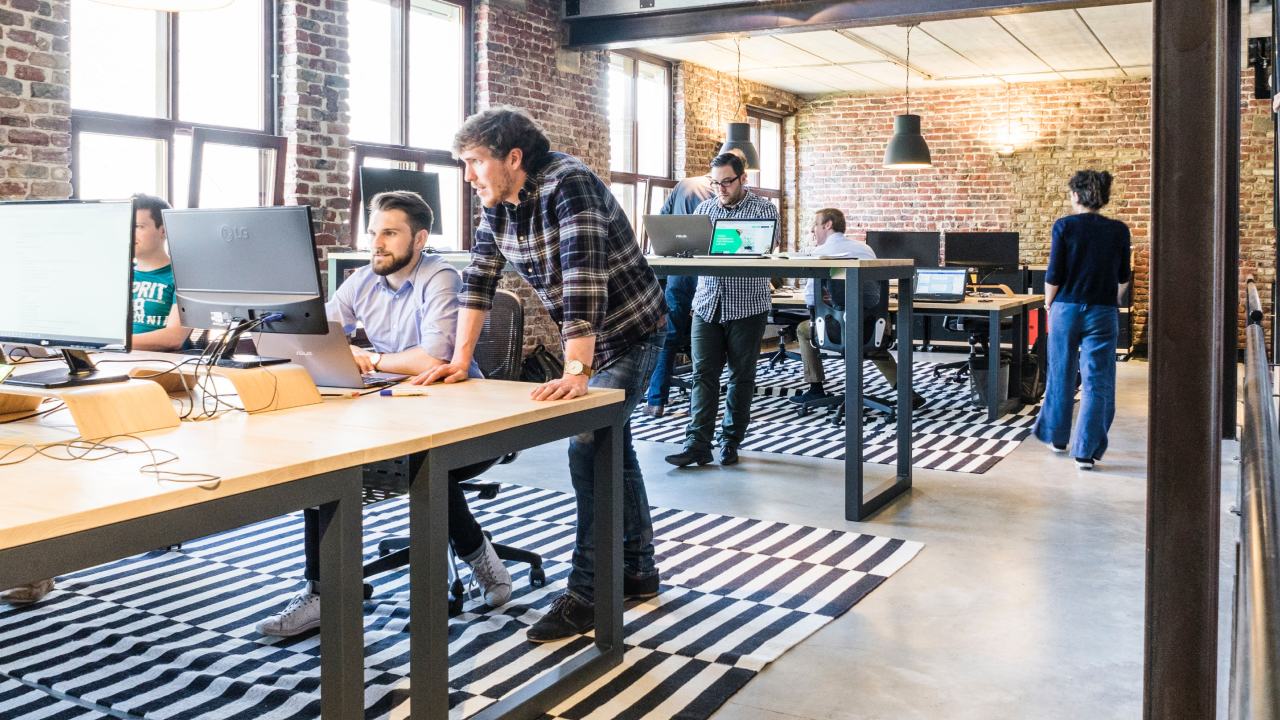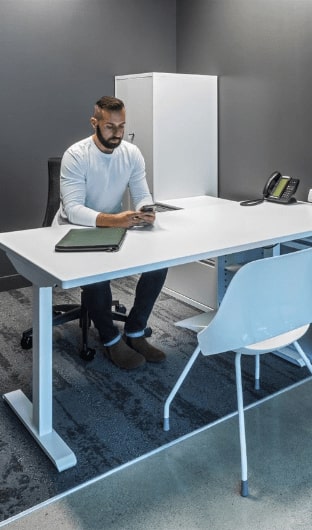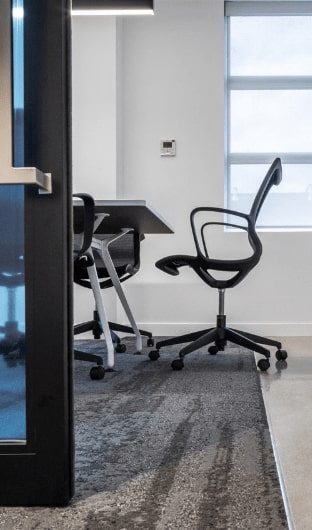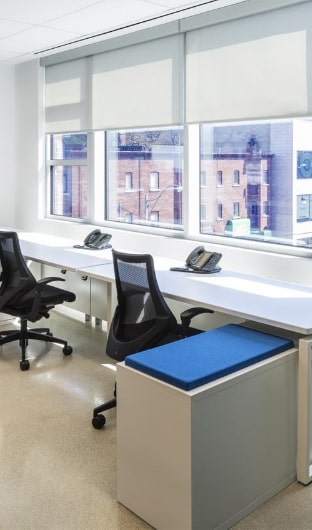
Designing Modern Office For Productivity
In the fast-paced world of business, a well-designed workspace can make all the difference. Modern office furniture offers comfort, functionality, and style, creating an environment that maximizes productivity. From ergonomic chairs to standing desks, modern office furniture is designed to meet the evolving needs of today’s workforce. In this article, we will delve into the benefits of modern office furniture, exploring how it enhances efficiency, promotes collaboration, and elevates the overall aesthetic appeal of workspaces.
Office Design For Productivity
Impact On Well-being
Modern office furniture plays a crucial role in promoting employee well-being through ergonomic support and comfort. Investing in high-quality, adjustable furniture can significantly reduce the risk of musculoskeletal disorders, thereby improving overall health. For instance, well-designed office chairs with lumbar support promote better posture, reducing fatigue and enhancing productivity.
Modern office furniture also improves mental wellness by providing comfort and reducing distractions, so employees can better focus on work.
Increased Employee Satisfaction
Ergonomic principles embedded in modern office furniture prioritize employee health by promoting proper body alignment. Adjustable chairs, standing desks, and ergonomic accessories like keyboard trays help prevent repetitive strain injuries. Incorporating these enhancements into office furniture design can lead to reduced absenteeism and increased employee satisfaction.
Maximizing Productivity
Diverse Spaces
Modern office furniture offers a range of options to create diverse spaces that cater to different work styles and preferences. For instance, quiet zones with soundproof booths provide privacy for focused tasks, while open areas with collaborative tables foster teamwork. Similarly, lounge areas with comfortable seating allow employees to relax or engage in informal discussions. The variety of spaces accommodates the diverse needs of employees throughout the workday.
The flexibility in creating diverse spaces through modern office furniture contributes significantly to employee satisfaction by providing an environment tailored to their specific tasks and preferences. Employees can choose where they work based on their current needs, whether it’s a quiet space for concentration or a collaborative area for group projects.
Optimized Lighting
Modern office furniture takes into account the importance of optimized lighting for employee well-being and productivity. Desks with task lighting options enable individuals to adjust brightness levels according to their needs, promoting comfort and reducing eye strain during tasks that require focused attention.
By incorporating office designs that maximize natural light distribution throughout the workspace, modern office setups contribute positively towards enhancing productivity levels by ensuring well-lit environments conducive to efficient work completion.
Strategic Colour Palette
Complementing modern office furniture with strategic painting choices can create a cohesive and visually appealing workspace. Choosing colours that promote concentration, creativity, or relaxation enhances the overall atmosphere of the office while also contributing positively toward maintaining high productivity levels among employees.
Accent walls or colour-coded furniture not only add visual interest but also help differentiate areas within the workspace and improve navigation — ultimately aiding in maximizing productivity by creating organized and visually stimulating surroundings.
Beyond Furniture
Activity-Based Working
Modern office furniture supports activity-based working by offering flexible solutions for different tasks and activities. For instance, height-adjustable desks allow employees to switch between sitting and standing positions throughout the day, promoting better posture and reducing discomfort. In addition, modular furniture options enable easy reconfiguration of spaces for meetings, presentations, or individual work. This adaptability fosters a dynamic work environment that caters to diverse needs.
Transparent Elements
Incorporating transparent elements like glass tabletops or partition systems in modern office furniture creates an open and airy feel within the workspace. These features promote visual connectivity between different areas while maintaining physical separation, enhancing collaboration and respecting privacy. Furthermore, glass partitions or see-through storage solutions can make smaller spaces appear larger and more inviting by allowing natural light to flow freely.
Nature Integration
Embracing nature integration through the use of natural materials like wood or plant-inspired designs is a hallmark of modern office furniture. Furniture with built-in planters or greenery helps bring elements of nature indoors, promoting a sense of well-being among employees. By adhering to biophilic design principles in office furniture, companies contribute to reduced stress levels and increased productivity.
Layout For Productivity
Adapting Flexible Layouts
Modern office furniture offers flexibility in creating workspaces to suit changing needs and evolving work styles. Modular furniture systems enable the creation of individual workstations, collaborative zones, or meeting areas. For instance, desks with adjustable configurations allow easy reorganization based on team requirements.
Furniture on casters facilitates effortless mobility, allowing quick layout changes without disrupting workflow. This means that an open workspace can be transformed into a presentation area within minutes. Such adaptability promotes a dynamic and agile working environment.
Comfortable Environments
Prioritizing employee satisfaction and well-being, modern office furniture focuses on creating comfortable environments. Ergonomic chairs with adjustable features and supportive backrests enhance comfort during long work hours while cushioned seating provides support and reduces discomfort associated with extended sitting periods.
Moreover, soft seating options like lounge chairs or sofas offer relaxation areas for breaks or informal meetings. These spaces contribute to fostering a positive atmosphere where employees feel valued and cared for.
Neurodiversity Support
In considering the needs of neurodiverse individuals, modern office furniture provides sensory-friendly options to create inclusive workplaces. Furniture featuring noise-cancelling elements helps reduce distractions for employees with sensory sensitivities such as autism spectrum disorder (ASD).
Adjustable lighting solutions also accommodate individuals’ visual preferences by enabling them to customize their workspace’s lighting levels according to their specific needs.
Lighting And Ergonomics
Natural Light Harnessing
Modern office furniture is strategically positioned to maximize natural light utilization, reducing the need for artificial lighting. Workstations are often placed near windows to take advantage of daylight, promoting a well-lit workspace. Translucent or light-coloured materials in furniture help disperse natural light throughout the office, creating a brighter and more open environment.
Maximizing natural light not only reduces energy costs but also contributes to improved mood and productivity among employees. Studies have shown that exposure to natural light can enhance alertness and reduce eye strain caused by prolonged screen time. By harnessing natural light effectively, modern office design creates a more comfortable and visually appealing work setting.
Active Workspaces
Incorporating ergonomic features, modern office furniture promotes active work environments by offering alternatives such as standing desks, balanced chairs, or treadmill desks. These options encourage movement throughout the day, combating sedentary behaviour associated with extended periods of sitting. By providing ergonomic designs that incorporate exercise equipment or facilitate stretching breaks, contemporary office furniture supports employee health and well-being.
Active workspaces contribute to reduced physical discomfort such as back pain and muscle stiffness commonly associated with traditional desk setups. Employees benefit from increased mobility while working on tasks without being confined to stationary positions for prolonged periods.
The design of a modern office plays a crucial role in shaping a productive and efficient work environment. To create a truly effective office space, it’s essential to prioritize the elements discussed in this article. By implementing these strategies, businesses can elevate their work environments, leading to improved productivity and employee satisfaction. It’s time to rethink office design and invest in creating spaces that empower employees to thrive. Connect with Harkel Office – a leading office furniture dealer in Ontario to create a healthy and productive workspace.





